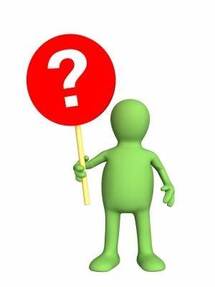 It’s a question a lot of Indie authors ask themselves, but isn’t easy to answer: “Should I do a free book giveaway?” If you only have one book out there, then the answer is “No” (but there are caveats to that – see later in this blog). The purpose of a free book promotion is to stimulate interest in your books, so that you sell more. But if you have given it away for free, who are you going to sell to? The people who have already had it for free aren’t now going to buy a copy, and if someone didn’t download it for free, they are hardly going to pay for it once the offer ends (again, see the caveats later). No, the idea of a free book promotion, or giveaway, is to showcase your writing, so that if readers like the free book, they will then buy your other books. For series writers this is a great incentive for doing a free giveaway. And for non-series writing authors with more than one title available, there is something in this for you as well.  "If it's free, I'll take 10, no 20, no 100 ...." "If it's free, I'll take 10, no 20, no 100 ...." OK, let’s deal with the elephant in the room. Yes, it is true that some people will download the free offer just because it is free and won’t then come back to buy any more of your books. But that is what I call “collateral damage”. It is unavoidable I’m afraid. But mixed in with the freeloaders will be readers who will try your book for free and then go on to buy more of your work if they like what they have read. I know this to be true because I have done it myself. I don’t think I’m unusual in this. At Selfishgenie we have also proved it with previous giveaways, which have resulted in an up-tick in sales of the other titles in the series after the promotion has ended. When we talk numbers later in this blog, they are based on actual results from previous promotions. 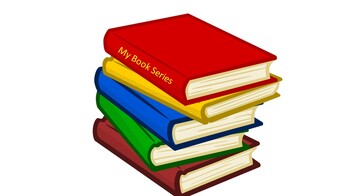 So, if you have more than one title available or you are a series writer, doing a free book giveaway can boost the sales of the rest of your books. You may have sensed a “but” at the end of that sentence. If you did, you have excellent intuition. But making a book free is no good unless you tell potential new readers about it, so that they can download it. There are free book listings on most etailing sites; Amazon certainly has one. However, a quick search we did for free books on Amazon returned 9,000 results. The chances of your book being on one of the early pages of the search results are pretty slim and if your book is anywhere more than five pages down the results, there isn’t much chance of it being found because people hardly ever go that far down search results.. 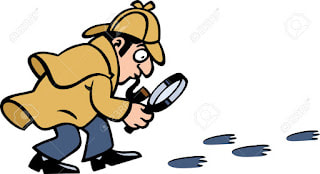 I refined that search to “most downloaded free books” and the list was reduced to just 3 pages, but to get into that list your book must have already been download for free, so it won’t appear there on the day you start your promotion. It won’t appear there until someone, (actually several someones), has downloaded the book. Social media promotion will probably shift a few downloads for you, if you have a lot of followers. However, there is no guarantee that your posts about your free offer will be seen. If you only have a very small following on social media, then your reach is limited unless you get a lot of re-Tweets or shares. It may seem counter-intuitive, but you will probably need to spend some money to give your book away for free. 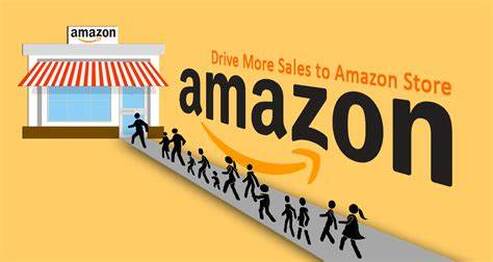 I don’t think Amazon or Google advertising are cost effective ways of doing that. You pay by the click, so it is difficult to control your spend because you probably need a lot of clicks to get enough downloads to start generating paid sales later, which means setting a high daily budget for your campaign. So, you need to look at other, cheaper ways to promote your free book. Ways that will generate lots of downloads. And you really want to know how much those downloads are going to cost you in the first place, so you can work out if you have any chance of getting your money back in paid sales. I’m talking about book promotion sites, which offer a fixed package for a fixed price. 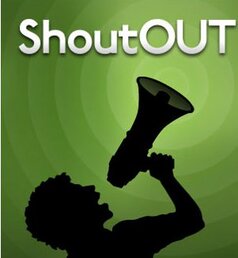 Now, there are two types of book promotion sites. There are those that use social media to promote your book and those that use a wider range of approaches (which may include social media but may not). The most important of these other approaches is email lists, because they are bound to be seen by readers who are on the list. Please, don’t use sites that only offer social media promotion - you can do that for yourself for free. Ignore the fact that your book will be “featured” on the promoter’s website. This isn’t the best way for the promotion to be seen. If that were the case, then it being on Amazon should be enough – and it isn’t. There is usually no guarantee that the readers the sites reach are the right readers for your genre, however. You may be an author of fantasy books and some of the people on the email list may only read romance, or crime drama, or whatever. But at least the readers of fantasy will also see the promotion. Genre preferences are one of the reasons why a 1,000 clicks may only get 100 downloads.  We have recently run a trial using a book promotion website, for our title “The Magi” which produced some promising results. The site we selected boasts an email list of over 300,000 readers. The site promised a guaranteed 1,000 downloads for our free book but we actually only got just over 200 (I’ll return to that later, to explain how the guarantee works). We usually think in terms of 10% of downloads generating new readers for a series or, in this case, approximately 20 new readers. So, here’s the maths (or math if you are American). 1. The promotion cost us £67 ($75) after using a discount code found in this blog 2. The book sells for £4.99 on Amazon. 3. One sale generates about £3.50 in royalties. 3. There are 9 books in the series. 4. If a reader who downloads the first book for free then buys the other 8 books, then it generates 8 x £3.50 = £28. 5. Therefore 3 new readers returns a profit of (3 x £28) – £67 = £14 profit on the promotion. But we reckon 200 downloads should return 20 new readers, so the anticipated profit is about £490. Impressed? Ok, too early to place an order for a Ferrari, but profit is profit. 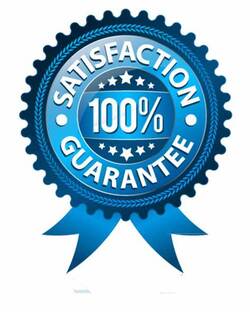 But we were guaranteed 1,000 downloads, so what happens now that we have fallen 80% short? The site owners promise us a pro-rata refund on the cost of the package. It is “site credit”, so we can’t take it in cash, but it does mean we can run another free book promotion in a few months’ time and it won’t cost us so much. It also means that our profit for this campaign will be higher because of the refund. As for why we didn't get the guaranteed 1,000 downloads, we'll return to that later. There is another aspect to the free downloads that we haven’t yet mentioned and that is the reviews that they generate. If you haven’t had many reviews for your book up to now, then this is a good way to get some more. I mentioned caveats earlier and this is one justification for an author with a single published title to run a free book promotion. 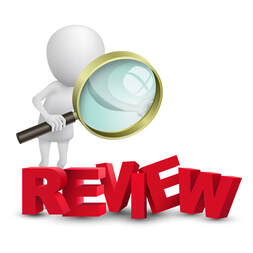 Remember, there were 200 downloads. That may generate a lot of reviews. Even freeloaders write reviews sometimes. And we all know how important reviews are for future sales. There is another time when an author with only one published title may consider doing a free book promotion. That is when they are about to publish a second title. Putting the first book out for free can stimulate demand for the second book. To make sure that this is capitalised upon, the author must put their new title on “pre-order” before running the free promo, and they must include a link to the pre-order at the end of the free book. That means uploading an amended manuscript that includes the link, but that is the work of moments. 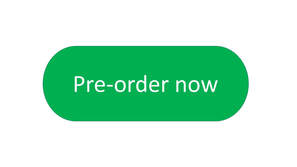 Once the pre-order goes live, whatever sales have been made will catapult the book up the sales rankings, which makes the book look more attractive to other readers who may not have taken advantage of the free download. However, it does require the book launch to be properly planned and timed, so that everything happens at the right time and in the right order. The book promotions site told us that 92% of the promotions they run for free books reach the 1,000 download target, so why didn’t ours do so well? We think we have some answers. We ran our promotion from Thursday to Monday and the number of downloads we got over the weekend was very low compared to the other 3 days. This suggests a lot of the email addresses to which the promotion is sent are work related, so no response at the weekend. But there is another possible reason. 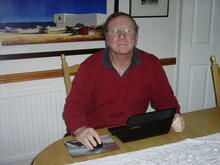 Author Robert Cubitt Author Robert Cubitt The author of the free book, Robert Cubitt, is British but around 80% of the readers on the promotion site’s email list are American. Our actual downloads reflected that proportion, with about 20% coming from outside the USA (UK, Canada, Germany, France Netherlands and Australia to be precise) and 80% from within. Sad to say that many readers will only read books by authors who are the same nationality as them. I don’t know why this should be. I guess people like books that are either written by people like them or are about people like them. But The Magi is a sci-fi series and none of the characters are like the readers (unless there are aliens amongst us) so it shouldn’t matter. It shouldn’t matter for the fantasy genre either. But it does seem to matter, so we Brits will have to suck it up and make do with the scraps from the table. But a potential £490 profit is quite a big scrap and is certainly better than no profit at all. This is NOT a recommendation, but the website we used for the promotion we have discussed here is Book Butterfly. If you missed out on our recent free book giveaway, don’t despair. You can still get a book for free just by signing up for our newsletter. Just click on the button below (excludes “The Magi Box Set).
0 Comments
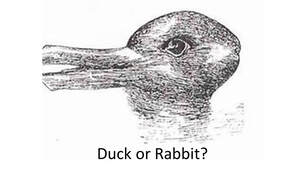 Once again I’m indebted to the users of Twitter for the inspiration behind this week’s blog. The theme is how perceptions don’t necessarily match up to reality. The Tweet(s) in question relate to an author bemoaning the fact that someone had posted rude 1 star reviews about two of her books on Amazon and she feared this was impacting on her sales. They were also undermining her confidence and making her ask herself if she should continue working on her third book. I Tweeted back (sympathetically I hope) that reviews weren’t everything and, at the end of the day they are an opinion, and no author can please everyone. If they had valid criticisms, then it was a good idea to learn from them, but otherwise forget them. There are also people who delight in posting 1 star reviews, just because they can. (I know, we live in a truly troubling world) 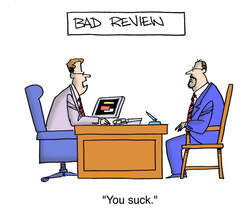 In her reply the author posted a screenshot of her review data, the yellow bars Amazon uses to show the percentages of reviews for each star rating. And it was highly revealing, but not in the way she thought. Out of around 240 reviews, over 60% were 5 star and another 20% were 4 star. I pointed that out, suggesting the (approx) 10% of 1 star reviews weren’t something to worry about. The number of 4 and 5 star reviews would be far more influential than the 1 star ones when it came to decisions about purchasing. She didn’t agree with me, suggesting that her KENP reads had dropped since the 1 star reviews had been posted. I suggested that she would need a bit more evidence than that in order to draw such a conclusion. Perhaps her KENP reads had dropped because her marketing activity needed refreshing. I think I may have persuaded her, because she did say she would think about that. Or maybe she was just trying to shut me up, which is a real possibility. 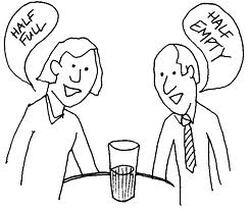 But it is easy to take an isolated bit of data, such as reviews, and interpret them as something they aren’t. Looking at her numbers, I would be using the percentage of 4 and 5 star reviews to trumpet the success of our books, in order to encourage new readers to try them. That screenshot she posted tells a far different story to the one she was seeing, as far as I was concerned. Because 80% reviews at that 4 and 5 star level are a real sign of success, not failure. It is always dangerous to take two bits of data, put them side by side and assign cause and effect from them. In this case a couple of 1 star reviews put alongside a drop in KENP reads equals a cause and effect. 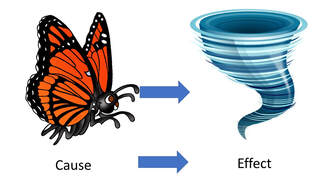 Cause and effect? Cause and effect? A third bit of data is needed in order to see if that is a valid conclusion. In this case the third bit of data would be a measurement of marketing activity: social media posts, advertising spend etc. If there is a lot of marketing activity but a drop in KENP reads, then the author may be right in her original conclusion. But if there is a drop in marketing activity at the same time as a drop in KENP reads, then perhaps it isn’t the 1 star reviews that are the cause, perhaps it is the lack of marketing. It is very easy to let our perceptions and emotions get in the way of interpreting our data. In this case it is possible that the author is (a) underconfident and (b) sensitive to criticism. I can’t prove that because I haven’t got all the data available, but it seems to be a reasonable conclusion to draw on the basis of what she said in her Tweets. 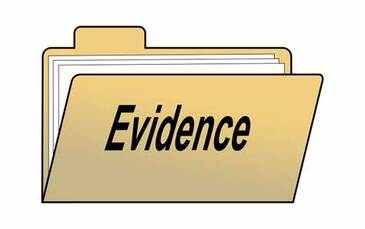 That under confidence, combined with the sensitivity, led the author to draw a conclusion that supported her perceptions and, despite what Lee Atwater may have said, perception is not reality, it is only the perceiver’s reality. Perception may be reality, but it isn’t actuality (Bill Cowher) and you have to be able to tell the difference if you want to market your books effectively. In this case it was the perception that 1 star reviews were affecting KENP reads, when the actuality might be a lack of marketing or perhaps another, undiscovered, reason. As statisticians will tell you, correlation does not imply causation. More evidence is needed. So, if you want to diagnose problems such as drops in sales levels, what can you do?  The best thing is to use several different types of data alongside each other and see what, together, they are telling you. KDP provides you with a lot of information on sales and KENP, but it doesn’t tell you anything about your marketing activity. This means that you need to have some measurement of marketing activity that you can analyse. If you use paid advertising, there is a mountain of data that can be obtained in relation to the performance of your ads. The most important bits are conversion rates. Eg how many impressions (views) did your ads get and how many clicks on the links did that convert to. Then how many of those clicks were converted to sales. The experts suggest you should be expecting at least a 10% conversion rate of link clicks to sales to consider an advertising campaign to be successful. But if you don’t use paid for advertising, you only use social media, you have to look elsewhere for your data. But the same principles apply. How much engagement did you get for the social media posts that pitched your books? How many clicks on the links etc.  The lower the numbers are, the less likely it is that you made sales or KENP reads. If you got high engagement levels but low sales, it means that readers looked at your book but chose not to buy it and there are many reasons why that may be. Reviews are one of them, of course, but they aren’t the only one. There is your cover, the blurb and the ‘look inside’ portion of the book as well. I would say that all three of those are a more likely reason for a reader not buying than having 10% 1 star reviews when 80% are 4 and 5 star. I’m not saying reviews aren’t important. Readers often send us important information tucked away in a poor review and that information can be used to improve writing. But, as I said before, a review is just an opinion and, in some cases, it isn’t even that. It may just be some poor soul being nasty because it makes them feel good. And that contaminates the data, just as an author getting their Mum to post 5 star review contaminates the data. But importantly, don’t let perception become your reality if you aren’t sure it is also the actuality. Correlation isn’t the same as causation (well, sometimes it is but that is a whole different blog). If you have enjoyed this blog, or found it informative, then make sure you don’t miss future editions. Just click on the button below to sign up for our newsletter. We’ll even send you a free ebook for doing so. 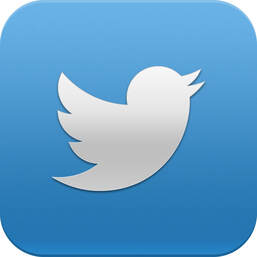 I think it is fair to say we get a lot of our ideas for blogs from Twitter and other social media sites, especially those used by authors. Be careful what you post, because you might well get a mention here. Not by name, of course. We would never do that. So it is this week, with a Tweet we saw a few weeks ago from an author (we sometimes write our blogs several weeks in advance of their publication). The Tweet was actually in two parts. The first part related to the way an author’s book sales had fallen off over recent weeks. By ‘sales’ we also mean KENP read using KindleUnlimited etc. A blog we posted a couple of weeks ago covered some of the reasons why sales vary on a seasonal basis, so we won’t cover that ground again (scroll down a bit if you want to find out more). But, of course, it’s not just the season of the year that affects sales.  We like to think of book sales a little bit like the way we think about tending houseplants. If you give a houseplant just the right amount of attention at just the right time, it should flourish. Well, a healthy plant in a disease free environment should live a long and happy life if it is given the right care and attention. But if you don’t give the plant the right care, or enough attention, or you give it at the wrong time, it will die. The same applies to giving it too much attention. The phrase ‘killing with kindness’ may have been invented for houseplants (if it wasn’t, please don’t email to tell us – put it in a blog of your own).  So it is with marketing a book. Given the right attention at the right time, your books should still sell even if seasonal factors are against you. That’s providing they are readable, of course – it’s hard to sell a poor quality book, ie one that has a ‘disease’. If you don’t do enough marketing or you do it at the wrong time or in the wrong way, your books won’t sell. And you can do too much marketing, killing the book with kindness so to speak, because readers get fed up with seeing your marketing efforts. Our response to the Tweet we saw was to suggest the author think about taking a look at her marketing strategy to decide what might be needed to lift her sales. The second part of the Tweet was about the author’s fixation with checking her sales data on KDP. She seemed to be looking very five minutes (I may be exaggerating) but she knew it wasn’t healthy. 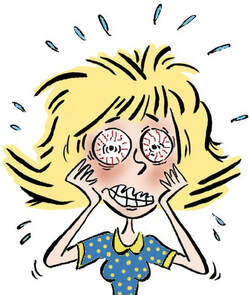 For Indie authors I can quite understand the need to constantly check sales data. Sales provide validation for the author that their book is ‘good enough’. An author who has an agent or a mainstream publisher doesn’t need that sort of validation. They have already had their fix by getting the agent and/or the publishing deal. But for Indies there is little other than sales data to tell them that readers like their books. Reviews are the other form of validation, of course, but they are opinion based and therefore subjective, whereas sales data is empirical. Numbers don’t have an opinion. To paraphrase an old business saying: reviews are vanity, sales are sanity. 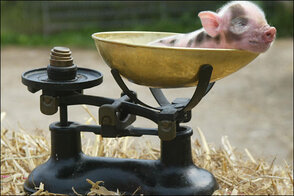 You don't fatten a pig by weighing it. You don't fatten a pig by weighing it. But you don’t fatten a pig by weighing it, as the saying goes (apologies to vegans, Jews and Muslims). Weighing your pig tells you if it’s gaining weight, but if you aren’t using that information to adjust your pig’s diet, then knowing its weight doesn’t achieve anything. OK, it’s a heavy handed metaphor (it was a heavy pig) but it makes the point. Knowing your sales data doesn’t sell more books. Knowing your sales data tells you whether or not your marketing strategy is working. If you aren’t making sales, or not as many sales as you think you should be making, then that is telling you to look at your marketing strategy so you can change it to make more sales. But if you make changes to your strategy, you have to give them time to work. Checking the figures every five minutes doesn’t help. It may just lead to frustration and, in extreme cases, it may actually be harmful to mental health.  By marketing strategy, we don’t just mean your advertising or social media posts. Book covers and blurbs can both have an effect on sales and need to be quality checked to make sure they are doing their jobs. The “look inside” feature on Amazon is also part of your marketing. If you don’t capture the reader’s imagination in those few free pages, you may not make the sale. The way you word your social media posts, what sort of images you use and a whole raft of other considerations also play their parts. We blogged about all of that last autumn, so we won’t go into those again today. If you want to know more, check out our archives under the "marketing" heading. So, Indie Author who inspired this blog, we hope we have reassured you that checking your sales data is actually quite normal. But we hope we have also encouraged you to take the information provided by that data and make use of it, so that your sales will look after themselves and you don’t have to check them so often. If you have enjoyed this blog, or found it informative, then make sure you don’t miss future editions. Just click on the button below to sign up for our newsletter. We’ll even send you a free ebook for doing so. 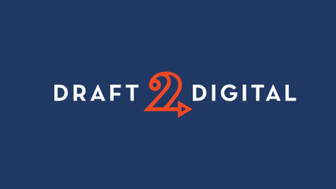 Big news - we have recently put some of our titles onto Draft2Digital. We decided to do this because, by keeping them exclusive to Amazon, we were actually narrowing our sales channels when we should really be going wider. Not everyone uses Amazon to purchase their books, so we were losing quite a lot of opportunities to offer our titles to those people. There was one advantage to using Amazon. That was their KindleUnlimted (KU) programme. We get a lot of downloads through KU and they account for a significant proportion of our revenue. But if we put our ebook product onto other distribution platforms, we aren’t able to use KU, so we risk that income. And yes, Amazon do check the other retailers to make sure we aren’t cheating.*  So, we analysed our income by title and it didn’t take a lot of time to realise that many of our titles aren’t read using KU, though they are purchased in ebook or paperback format. For some reason those books don’t seem to attract KU readers. Five of the titles are non-fiction and that may have something to do with it. The remainder do get the occasional KU download, but not enough to justify us making them exclusive to Amazon. OK, back to basics; just who are Draft2Digital (hereafter referred to as D2D)? Basically, they are similar to KDP in that they allow Indie authors and small publishers like ourselves to upload their books to them, which they then distribute to retail channels. They also offer formatting services, cover creation (not cover design as such) and a few other whistles and bells. But their big selling point is that they distribute books through a wide range of on-line retailers.  How many? Here’s the complete list (at time of writing): Apple Books, Barnes & Noble, Kobo, Scribd, Smashwords, Tolino, Overdrive, bibliotecha, Baker & Taylor, BorrowBox, Hoopla, Vivlio and Palace Marketplace. They will also distribute via Amazon if your book isn’t already on there, so it really is a “one stop shop”. Several of the companies listed above are aimed at the book borrowing market rather than the retail market, so in that respect they are similar to KU. I’m not suggesting that is 100% of the on-line book market, but it is a lot more than Amazon by itself. If you are considering distributing your book as an audio title, they also offer audiobook services, including helping you to find a narrator. This service may be cheaper than ACX.com, but only marginally (see previous blogs on the subject of audiobooks). 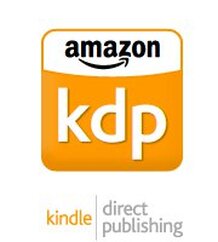 So, what is D2D like to work with? First of all, using the files we had already uploaded to Amazon caused us problems. Any reference to Amazon in the MS caused it to be rejected, as did references to ebooks in paperback MS’s. As we often insert a preview for another book at the end of an MS, with a link to its Amazon sales page, this meant having to go back and remove those references and links. You may also have to remove contents pages if you want D2D to insert a contents page complete with hyperlinks. The same applies to copyright pages, dedications etc. however, you can opt to use the ones that are already embedded in your files. 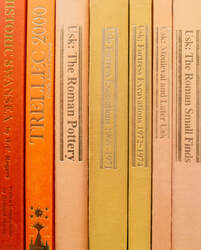 If you already have a cover for your ebook then it will probably upload OK to D2D, but when we uploaded our paperback covers we had some rejected because the back cover blurb was “blurred”. We had used shadowing behind the text and D2D’s quality bots couldn’t handle that. They also reserve more space for an ISBN than Amazon, so if any text encroaches into that space it will result in the cover being rejected. Paperback covers also have to conform to the D2D standard trim size, which is 5.5 x 8.5 inches (14 cm x 21 cm). If your covers are bespoke, created for you by a designer, you may have to go back and get them to adjust the size. However, if you created your own cover using packages such as BookBrush, you can alter the size yourself (don’t forget to adjust the positions of the text). I guess that sort of thing is all part of the learning curve for a new app, but it was frustrating and continues to be so as we have to change our cover designs and edit our MS’s in order to overcome these issues. 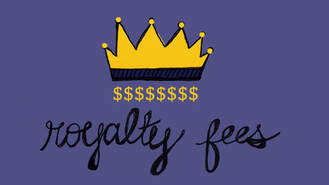 What about royalties? As with Amazon, you can set your own price for your books, which means you have control over the amount of royalties you receive once D2D and its partners have taken their share of the sale price. Unlike Amazon, which has two options for royalty percentages, D2D has only one, which is the sale price minus distribution charges. You also have the capability to run price promotions for ebooks and you can price your book to make it free, but not on Amazon. The price for Amazon will automatically be set to a minimum of 99c (99p). What is worth noting is that the printing costs for paperbacks seem to be much higher on D2D, which makes them less competitive than Amazon. To reduce the price to what you may have set on Amazon, you would have to reduce the amount of royalties you earn. In some cases it may not be possible to price-match to Amazon and still earn any royalties at all. Conversely, you could increase your paperback prices on Amazon, but that may make them less competitive compared to works by other authors. If you aren’t as famous as J K Rowling, you can’t charge J K Rowling level prices. 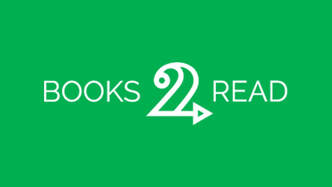 In terms of marketing tools, D2D has a partner site called Books2Read (hereafter referred to as B2R). It's basically a resource for readers to use to find books they may like. When your book is published its details are automatically copied across to B2R along with a “universal book link” (UBL) that allows the reader to go direct to their preferred retailer in their preferred country to buy the book. One of the tools B2R offers to authors is “new release notifications”. These are automated emails sent to readers who are registered on the site and who are signed up to your profile, so once you have uploaded your book, this tool helps your readers to find it. This is something I think gives D2D a real edge over Amazon, because any marketing you do through them has to be paid for.  OK, it’s a one shot deal, but one shot is better than no shot at all. It’s also fully automated, so you don’t have to do anything except register your book for the notification system and D2D has a pop-up for that which appears when you press the "publish" button.. You’ll know when the email notification has been sent, because you’ll receive a copy. Other than B2R there are no real marketing tools for you to use. They don’t have an equivalent to Amazon Ads, which is a shame. Somehow I think D2D is missing a trick here and is also limiting the ability of authors to market the books they have so painstakingly uploaded onto their site. On the other hand, it does create a “level playing field” for all their authors, because you can’t “buy” success through advertising. Everyone has the same chance of being discovered if readers are looking for their genre of books. Of course, you still have the option to advertise your books using other channels, such as Google, Facebook, Twitter et al. Make sure you include the UBL in your advert so that readers buy it through D2D rather than go looking on Amazon. 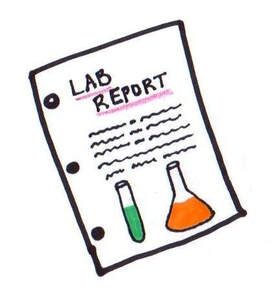 So, has this switch resulted in thousands of new sales? Well, it’s early days yet. What I can tell you is that we had sales within days of uploading our first book to the site. Not many, I’ll admit, but sales are sales and we hadn’t done any marketing work for the book. Readers found them for themselves and that rarely happens on Amazon. We’ll let you know more when we start to get some results worth talking about. In the meantime, check out D2D for yourself and see what you think. It costs nothing to look. * We know Amazon (actually their bots) goes looking, because we got a “cease and desist” email from them for one of our books which was uploaded to Smashwords some years ago and we had forgotten to take it down when we enrolled the same title on KU. Amazon threatened to withdraw our earnings for the book if we didn’t unpublish it from Smashwords. They’d actually found the book on the Barnes & Noble website, who Smashwords were using as one of their distributers. If you have enjoyed this blog, or found it informative, then make sure you don’t miss future editions. Just click on the button below to sign up for our newsletter. We’ll even send you a free ebook for doing so. 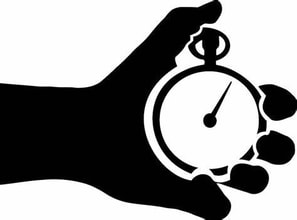 Timing is everything in life, but even more so for Indie authors who are trying to promote their books on a limited (or even zero) budget. Here at Selfishgenie we track our sales on a day by day, week by week, month by month basis so that we can work out when is the best time to advertise our books. Some days we see more people buying books than on other days, so they are the days we want to advertise, so that we can catch the readers' attention on the days when they are buying. That doesn’t mean to say we don’t advertise books on other days. After all, people are all unique and each person has their own shopping habits. But we know that, in broad terms, there are days when more people buy books than other days. Those are the days when we may consider increasing our advertising spend. I’ll go into why those variations exist in a moment. 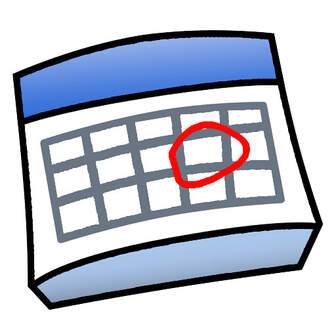 By tracking people’s book purchasing habits over a longer period of time we can also work out when to do promotions. Again, I’ll go into why that may be in a moment. But that same timing issue extends to when we should launch our books. There are some months of the year when it is better to launch a book than others. I’ll be talking about the UK here, but the same rules probably apply wherever you live. All you have to do is adjust to suit your calendar. June and early July are a good time to launch a book in the UK. Why?  Because the majority of people take their vacations in July and August and will be looking for something to read while they hang around in airports, sit in their aircraft seats for several hours and then lounge around the swimming pool at their destinations. For some people this may be the only time of the year when they actually have time to read a book. This is particularly relevant for the ebook market, because no one ever takes enough books with them on holiday, so they’ll be logging their Kindles into the hotel Wi-Fi to buy even more books for the second half of their holiday and for the return journey.  Children's books - yes for July, no for January. Children's books - yes for July, no for January. Children’s books are especially popular at that time of year, because parents are desperate to keep their children occupied while travelling and during the school holidays. The first quarter of the year, on the other hand, is very bad for children’s books because (a) they are back at school, (b) they still haven’t read all the books they received from loving relatives at Christmas and (c) money is tight during the first quarter (see more below). If your books are aimed at the older reader, you will probably want to launch your book in August, because all those grandparents who have been on child minding duty over the long summer holiday period are suddenly free to go on holiday themselves in September, when the kids go back to school. I know, because that’s when I go on holiday and the hotels I go to appear more like old folks’ homes than holiday resorts. There are very few people there who are under fifty and those that are there either have no children or have children who are still too young for school. 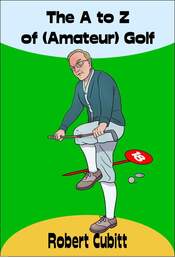 Here’s a tip for you, if you write books in a series. Take a paperback copy of Book 1 with you when you go on holiday and leave it in the hotel (most hotels have a shelf of books for people to borrow). You may snag a new reader for the rest of the series that way. Obviously the seasonal issues mentioned above are applicable to advertising spend as well as book launches. In November and right up to mid-December 2022 we promoted our golf book as a Christmas present for golfers and made quite a few sales that way – more than the whole of the rest of 2022 put together. If you want to know more about the best time to launch your books, broken down into genres, we found this helpful article. But there are others if you do a search. So, what is the best time to advertise?  Books are a popular Christmas present, so giving your advertising a seasonal boost may pay dividends and, of course, we’ve already mentioned the summer season. Think about advertising romance in the run up to Valentine’s Day and promote books as a gift for Mothers’ Day and Fathers’ Day But what about routine, week-in-week-out advertising activity? We found Friday to be the best day of the week to advertise, as that is when people go to look for their weekend reading. Weekdays are generally “early to bed days”, both for children and adults, but at the weekend a lot of people catch up on their reading and to do that they need books. Hence higher sales figures for books on a Friday. 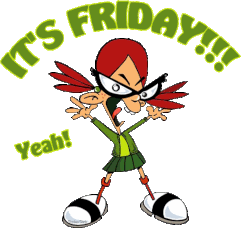 You can even refine that down a little bit if you want. Come lunchtime everyone is thinking about finishing for the week, so they may start browsing the book listings from lunchtime onwards, so you don’t need to spend so much money in the morning. Sunday evening is also a good time, especially for paperbacks. Come Sunday evening a lot of people have either finished their books or are getting close to finishing. The “forward planners” will be thinking ahead and looking towards the following weekend. Paperback readers will be ordering on Sunday evening so that their books are with them by Friday. At the other end of the scale we have noticed we get far fewer sales on a Saturday and a Monday. Saturday is probably slow because people have a lot of family things going on as well as shopping, sport and general leisure activities. Monday probably because people are back at work and won’t have much time to think about reading. 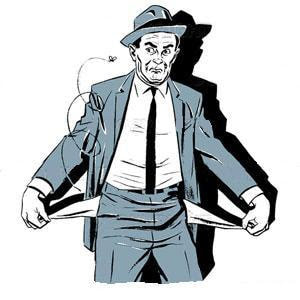 Certain times of the year are better than others for promotions. January and February* are the months when the Christmas chickens come home to roost and those credit card bills for all the holiday spending land on the mat. Energy bills are also at their highest. This means people have less money to spend and one of the places they can cut back is on their book purchases. We have seen consistent reductions in income during the first two months of the year since we started our business. So, this is a great time to do a price reduction or free book promo – especially free! Everyone can afford to buy a book that is free! Again, I’m talking to the series writers mainly. Give the first book in the series away at a reduced price, or for free, and there’s a good chance that if the readers like it, they’ll come back for the rest of the series -at the normal price - when they have a bit of disposable income in their pockets once more.  This is where you have to manage your marketing activity very carefully. No one can download a free book unless they know it is available. So, you have to be prepared to do some marketing. Social media marketing is free of course, but evidence suggests it is becoming less and less effective as a marketing channel.  Conversely, Amazon Ads, Facebook Ads, Google Ads etc are quite expensive, and you don’t want to spend a lot of money to give something away for free, even if you are going to get the money back later in sales for Book 2 onward. There is a happy medium and this is where book promotion sites come in. This year we used Book Reader Magazine and found them to be both cheap and effective. We are NOT recommending them and there are plenty of other, similar, sites who do the same job. You’ll find a list of some of them here. That site also offers some promo codes so you can reduce the cost. Book Reader Magazine cost us $15 (approx (£13) when we used a promo code and we got plenty of downloads as a result. 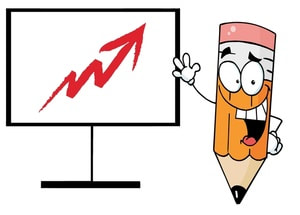 What was the outcome (because that is what is important)? During the first week of March we saw a massive surge in sales of the series we gave away. Some of that increase may have come about because people had a bit more cash available, but the majority of it is likely to be because they had downloaded Book 1 for free and wanted more of the same. It’s an 8 book series (so far) and we make a profit of about £3.50 per book. So, snagging one new reader that way not only repaid our investment, it gave us about an 80% profit. 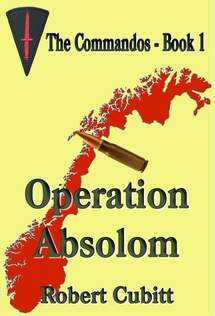 I can assure you we snagged way more than one new reader. Regardless of the season you will need to continue with your advertising at other times if your books are listed on KindleUnlimited (KU). As it’s a subscription service, readers want to get value for money from it and you want the books they download to be your books, so you have to keep pitching to them. You can expect to see KENP page reads going up during January and February as readers opt not to buy books if they are already KU subscribers. Most mainstream publishers don’t use KU, so this is a great opportunity for Indie authors to get their books read instead. However, you may want to reduce your advertising spend a little to reflect the reductions you’re going to get in ebook and paperback sales during the same period.  At this point I have to add a “health warning”. The results I’ve talked about above relate to the books we sell. You may want to analyse the sales data for your books to see if they conform to that pattern – or if they are different. We suspect that there will be similarities, but we can’t guarantee it. * Traditionally January and February were known by London taxi drivers as the “kipper season”. Kippers (a type of smoked herring) used to be a cheap food and taxi drivers ate a lot of them when their income was reduced during the first two months of the year. Presumably they would call it “pot noodle” season now. If you have enjoyed this blog, or found it informative, then make sure you don’t miss future editions. Just click on the button below to sign up for our newsletter. We’ll even send you a free ebook for doing so. This week, Selfishgenie Publishing hands over its blog to Robert Cubitt, one of our authors, who returns to tell us about his experiences in publishing an audiobook. All Views expressed are those of the author and do not necessarily represent the views of Selfishgenie Publishing. 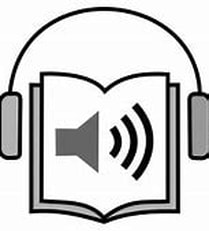 Back in December 2022 I wrote a blog about dipping my toe into the audiobook market and whether it was right for Indie authors, given the expense of employing a professional narrator (starting prices are around £1,500 ($1,600)). You can find the original blog in the December 2022 archive. At that time, I promised to get back to you to talk about the outcomes, so here I am. I’d like to be able to report that I had a great response to the audiobook and sales were phenomenal, but I would be lying. I have made some sales, but they aren’t anywhere near as many as I hoped, or as they needed to be to recoup my investment.  I put the blame squarely on ACX.com, the platform that the books are distributed through. They are a subsidiary of retailing giant Amazon. They offer no assistance with marketing. This is remarkable, considering that ACX.com can only make money if authors are able to sell their audiobooks. Users of KDP will be familiar with the range of marketing tools that the site offers, including access to Amazon Ads. But there are no equivalents on ACX.com. Amazon Ads are available for audiobooks in the USA, but I don’t live in the USA and my audiobook isn’t aimed at the American market (but American and Canadian readers are welcome to listen to it - see below for more information). So, not much help here in the UK. But even if I wanted to sell my audiobook in the USA, that marketing channel isn’t accessible through ACX.com. There is no link from one to the other. BTW Chirp, the audiobook channel of the book marketing site BookBub, also operates only in the USA and Canada. So, not much use to us 400 million Europeans then. 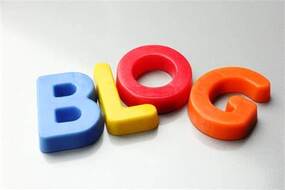 The little bit of advice that is offered by ACX.com is in their blogs. I can sum it all up in three bullet points: - Find some reviewers, - Use social media (including paid advertising). - Pay audiobook promotion sites (but none are recommended so you pay your money and take your own chances). The only practical help they provide is a batch of promo codes for free giveaways of your audiobook, presumably to give to those reviewers that are queuing up to offer their services for free (sarcasm), but they offer no channel through which to distribute those, so once again the author is left high and dry. 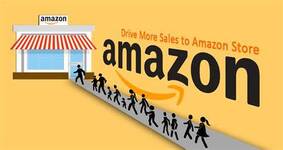 The whole point of using Amazon Ads to sell a book is that the ads are targeted directly at people who are already looking for books to buy. The problem with advertising using social media is that people seeing an ad on the social media feed (a) might not be looking for a book to buy and (b) they have to leave their social media browsing in order to buy the book even if they are interested. Getting people to leave their social media browsing acts as a barrier to sales. If I, a humble amateur marketeer, know that you would expect the professional marketing people at ACX.com and Audible to know that too, and to follow the lead of Amazon to remove that "advertising by proxy" barrier to sales. But they don't. Or, if they do know it, they don't consider it worth the bother to do anything about it. I have to say I find this quite remarkable. After all, if the author can’t market their book, ACX.com doesn’t make any money from the book either. You would think they would be moving heaven and earth to help authors to market their books. Not only that, but the marketing activity itself can be monetised to produce revenue for them.  The faceless corporation. The faceless corporation. I don’t know who actually runs ACX.com and Audible, but they aren’t very business-like if they are finding ways of NOT making money. In addition, I have found their customer service to be less than professional. Their stock answer to every question or problem seems to be “try asking someone else”. Again, they seem intent on not helping their company to make money. I’ll give you an idea of just how unhelpful ACX.com is. After doing a Google search, I found this blog article (I couldn’t find it on ACX.com itself) about creating an Audible author page. Good idea, I thought. I’ll click the link and do that. The trouble was, there is no link. And I can’t find out how to do it through the Audible website because that is aimed at listeners, not authors. 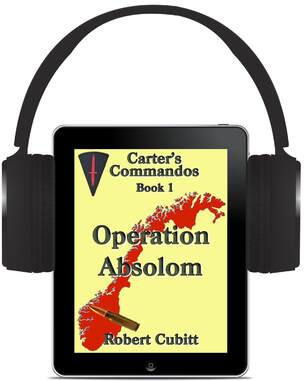 So, unless you are very good at marketing your books, you will probably struggle just as much as I have with trying to find any listeners for your audiobooks if you distribute through ACX.com. Now, you may be questioning the quality of my book at this point. After all, nobody can sell a bad book, even in audio format.. A fair observation and if the ebook and paperback versions were selling equally badly, I would agree with you. However, that isn’t the case. Operation Absolom is my biggest revenue earner, and it is so successful that the royalties from it are what paid for the production of the audiobook in the first place. Given the level of investment required, you can work out for yourself how successful the book has had to be in order for me to make the decision to produce the audiobook. 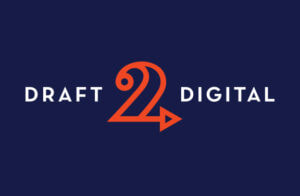 There is a slightly cheaper option. Alternative self publishing book distribution site Draft2Digital (D2D) have their own panel of narrators who offer prices from around $135 (£120) per narrating hour, giving an overall cost of approximately $1,400 (£1,300) for a 300 page book. I haven’t used them for audiobooks (I have for ebooks and paperbacks) and if you do then you can’t receive the higher (40%) royalty rate from ACX.com if you also distribute through D2D. However, it does provide a wide distribution channel, so it may be something you wish to consider. If you already distribute an audiobook through ACX.com you can also put it on D2D (using the same audio files), but you will have to reduce your royalty option on ACX.com to the 20% level. But there are no marketing tools provided by D2D either, so you will encounter the same problems when it comes to helping listeners to find your books 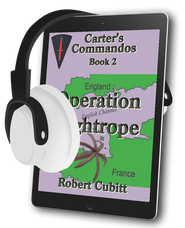 So, am I advising Indie authors not to venture into audiobooks? No, I am not. This is a growing market and Indie authors can gain an advantage by getting their books into audio before it gets too big and swamps us all. But I am advising Indie authors to consider how they are going to market their audiobooks before spending all that money, because you will get precious little help from ACX.com and D2D. If you can’t crack the marketing nut before you invest heavily in your audiobook, then it is probably advisable to proceed with caution. What about me? Am I giving up on audiobooks? No, I’m not. In fact, I’m doubling down. Book 2 to of the Carter’s Commandos series, “Operation Tightrope” is already live on Amazon, Audible and iTunes. . Again, I’m invested my royalties from my ebooks and paperbacks to cover the narration costs (more proof of their continuing success). Now I’m going to crack that marketing nut if it kills me. If I succeed, I’ll be sure to come back and let you know, so you can do it too. If you do decide that you want to get into the audiobook market, then I wish you every success. If you have enjoyed this blog, or found it informative, then make sure you don’t miss future editions. Just click on the button below to sign up for our newsletter. We’ll even send you a free ebook for doing so. 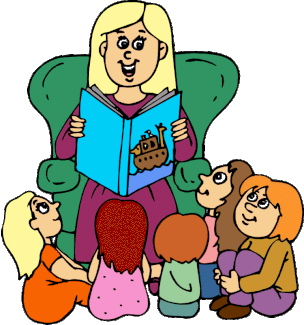 Never judge a book by it's cover. Every picture tells a story. Which of those two old sayings resonates most with you? For us it's the second, because book covers are supposed to tell a story and there is no doubt that readers make judgements about them. So what story is your book covers telling? When readers do searches for books, or even when they are just browsing through the listings, what is the first thing they see? It is one of two things – either a book’s title or its cover. Sometimes it’s both because the title is on the cover anyway. I’m not going to talk about titles. There are too many theories about what makes a good title and, so far as we can tell, one theory is as good as another. Here’s one we found, but there are hundreds more. But the same can’t be said for covers. They have to convey so much information in a simple image and, sometimes, it’s easy for them to convey the wrong information.  Take the book on the right which was, until recently, the cover for the first book in our Magi series. We had thought it was quite a good cover, which is why we stuck with it when we signed the author. That was until we got a bit of feedback that told us we were way off track with it. Someone had emailed us asking if we would be prepared to provide a few paperback copies of one of our books for discussion by their book club. They were raising money for charity through a small attendance fee and income from tea and cake sales and, once the books had been read, they would be sold second hand, also to raise money for charity.  Happy to make our contribution, we happened to have a few spare copies of The Magi lying around the office, so I emailed her a synopsis and the cover image. We were quite taken aback when the lady replied “We are a church group and aren’t in the least bit interested in a book about BDSM. Thanks for the offer but we’ll go elsewhere.” (If you are an innocent type who is unfamiliar with the term BDSM, we don’t suggest you Google it). We were puzzled by this response, so we emailed back asking what she meant, to which she replied that with the leather clad lady on the cover, it was clearly a book of an erotic nature and that BDSM was implied.  We emailed back to assure her that the book had no erotic content at all (sorry if you are disappointed by that) and peace was restored, but the book still wasn’t accepted because, with that cover, they didn’t want to sell it on their second-hand book stall. But we had learnt a valuable lesson. The cover was designed by a previous publisher, with whom we are acquainted, and I feel certain that he had no intention of implying that the book had anything to do with BDSM. But, looking at it in light of that response from the book club, I could now see what the lady was getting at. And the image of the leather clad woman appeared on the cover of all 9 books in the series, and on the box set. It was part of the “branding” of the series.  Then there are the other two elements used on the covers. The inclusion of the image of a distant galaxy is appropriate as it’s a sci-fi book. That was also part of the series branding. The third element, however, in this case an “electronic egg” changed with each book in the series, to tie in with the plot of the book. With doubt now weighing us down, we started to wonder about that suitability of that egg image, too. What did it suggest to the readers?  So, we asked a few of our readers for their opinions. The general consensus was that it was confusing. How could you have an electronic egg? What would an electronic egg do? Why was the egg floating in space? Was it some sort of spaceship? What had the egg to do with the woman? Was that the way babies were born in the book? Well, if the cover was causing as many questions as that, it clearly wasn’t doing its job of selling the book. As it happens, the answers to the questions are contained within the book but, of course, no one was going to buy the book to find that out if they were confused about it in the first place. One thing we know is that readers don’t like to be confused before they even read the first page. In fact, it’s only the readers of crime fiction (and not all of them) that are willing to be confused by their books. 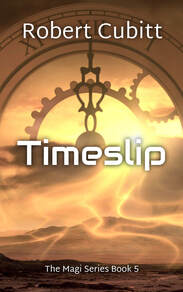 So, we decided that (a) the book’s image sent out the wrong message to some people and (b) it confused other people. Which was, perhaps, why the book and the series hadn't been doing as well as it deserved. It is rather good, as many sci-fi readers have discovered (but you would expect us to say that). So, we set out to create 9 new book covers that presented a less confusing message. In fact, all we wanted the images to say was “this is a sci-fi book”. One or two of them do hint at the content, the ones for “Cloning Around” (Book 4) and “Timeslip” (Book 5 – image to the left), but the others are a little bit more generic. 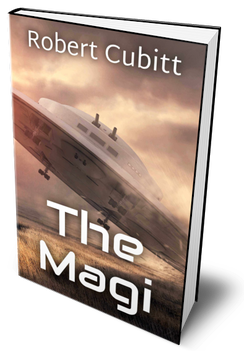 If they say anything it’s “This is sci-fi and weird stuff will happen”. (BTW, you can find out more about the books shown on our "Books" page or by clicking on the images) So, what does your cover say about your book? Does it give out an unintentional message, the way ours sent out a BDSM message? Does it confuse the reader? Is it different enough to make it stand out from the crowd? Because that third question is also important. When readers do a search by genre, they get presented with list after list of books, which they then scroll through. The cover of your book has to stand out from the crowd if you want the reader to click on it and find out more. If the cover looks too similar to the ones above and below it, the reader’s eyes are going to slide right past. Yes, do be bold, be different; but make sure that the key message about your book is plainly understood from its cover image. If you have enjoyed this blog, or found it informative, then make sure you don’t miss future editions. Just click on the button below to sign up for our newsletter. We’ll even send you a free ebook for doing so. 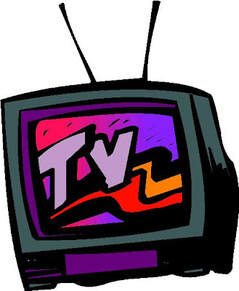 Big businesses spend a lot of money on advertising. I think we all know that. They spend it because it works, otherwise they wouldn’t do it. One of the reasons they spend so much on advertising is because they keep launching new advertising campaigns. They will run a campaign for a few weeks or maybe a few months, then they’ll stop for a while. Then they’ll start a brand new campaign with different ads. The ads may be similar, using the same characters or the same voices, but they will look different. The characters will be in a new setting, or the voices will be fronted by new images. But it’s the same product that is being advertised. So why go to the expense of re-making ads so often? Why not just continue using the same campaign all the time?  It’s because we, the public, get used to seeing an ad, so after a while we don’t pay it any attention. We need something fresh to make us watch the ad and hear the message once more. It’s a bit like teenagers being told to tidy their rooms by their parents. If you thought that your teenager isn’t listening anymore, you are probably right. They’ve heard it so many times, they’ve “tuned out” the message. And we all do it. Which is why advertisers spend so much money trying to attract our attention again by making new adverts. So, what has this got to do with Indie authors? you may ask. I’m so glad you did. "But that will stop working after a few weeks." Indie authors spend a lot of their time using social media to promote their books. It’s free unless you use the paid advertising facilities. The most common way to use it to promote work is to post a bit of blurb and a link to where the reader can find out more. The link then pulls the cover image through from the retail site so it can be seen on the social media site. That’s fine if you don’t want to pay for advertising. But that will stop working after a few weeks. Like adverts for big businesses, people will soon “tune out” your advert because once they’ve seen the cover, it is too familiar to bother with. They either bought the book several weeks ago, in which case they aren’t going to buy it again, or they are going to scroll past it. So, the indie author has to do what the big businesses do. They have to “refresh” the message. How can you, as an indie author, do that? Well, the image is the first thing to look at. Are you relying on the link in the post to reproduce the book’s cover from the sales page on Amazon, or another retailing site? If you are, then you can’t change the image unless you change the actual cover. But, actually, you can. 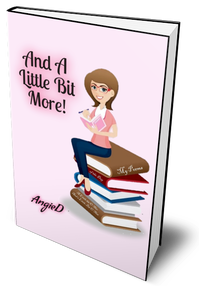 You can upload a new image into your Facebook, Twitter, Insta, etc post. That way it will take priority over the link to the sales page and will be the image that is seen. The link is still there for people to click on, but the image you use can be changed in multiple ways to keep the message fresh. It also has the advantage that you can be more creative with the image and do things that a simple link to Amazon (or whatever) can never do. You can create 3D images of your book’s cover.  You can overlay the 3D image onto an atmospheric background, along with some text. If the book is part of a series, you can show two or three covers side by side in a single image. You can change the orientation of the image to make it more suitable for viewing on a phone or tablet. Ultimately, you can create a “trailer” for your book, using video imagery alongside your book’s cover. That is really eye catching. By now, some of you will be asking “How can I, an impoverished author, create those sorts of images?” Well, if you can use PowerPoint you can do some of that. You can even make videos if you download free apps like “Moviemaker”, which can join together images created in PowerPoint, accompanied by a narration, text or music. If you want to invest in some software to help you, there is Photoshop, Canva and one we reviewed a couple of weeks ago, called Book Brush, which specialises in creating those sorts of images for authors. There are probably other packages available, but we’re not going to list them all. Will it cost much? Well, somewhere between £100 - £200 ($110 - $220) will probably cover it. 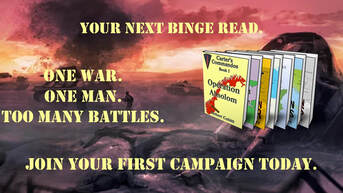 Immediately some of you will be saying “I can’t afford that.” To which I will reply “Can you afford not to sell any books?” If your books aren’t selling, then doing nothing is not an option. Einstein defined insanity as doing the same thing over and over again and expecting different results each time. I’ll put it a slightly different way: If you always do what you always did, you’ll always get what you always got. If you want a different outcome, you have to do something different. That applies to life in general, of course, but this isn’t a philosophical blog. Just be assured that if your books aren’t selling using whatever methods you are using now, they will continue not to sell unless you change your methods. And what you do has to be within both your ability and your control. Unless you want to contract an expensive marketing agency to promote your book, you have to do whatever it is within your power to do. "I know you don’t want to hear this but, by itself, using social media for free is never going to turn anyone into a successful indie author." One of the ways you can do that is to change your post’s images and messages at regular intervals. And to do that you need the right tools. I will admit that there is an element of risk involved here. You may spend money on buying an app to help you create more or better images and you may not increase your book’s sales at the end of it. But, on the upside, if it works and you sell more books, your investment will repay you, because you can use those apps time and again to create more and more new images. But rest assured, if you don’t spend the money, nothing will happen anyway. Success doesn’t come for free, as any indie author who is selling a lot of books will tell you. We are selling quite a lot of books because we are spending money. We aren’t a big business so we can’t afford to spend much. But if we didn’t spend anything, we wouldn’t sell enough books to cover our day-to-day running costs. I know you don’t want to hear this but, by itself, using social media for free is never going to turn anyone into a successful indie author. If you have enjoyed this blog, or found it informative, then make sure you don’t miss future editions. Just click on the button below to sign up for our newsletter. We’ll even send you a free ebook for doing so. Disclaimer: We are not connected with Kindlepreneur in any way and have no financial interest in the product reviewed in this blog. This review has not been paid for by Kindlepreneur, Dave Chesson, or anyone else.  Not the real product's logo! Not the real product's logo! Let me make it clear up front, if you only have one book published and never intend publishing another, you aren’t doing much marketing and you don’t intend paying for marketing, this product may not be of much use to you. But if you intend having a lengthy career as a self-published author, if you are planning to publish a series, or if you are a small, independent publishing house like us, then there is probably something here to interest you. Warning: This is a lengthy blog because for authors and publishers to understand the value of the product we are reviewing, they also have to understand the need for it. What need do you have that this product satisfies? You may not even know you have that need until you read this blog. Publisher Rocket is an aid to marketing and an aid to advertising using Amazon Ads and other advertising platforms. One of the things every publisher (I include self-published authors in that) has to know is which keywords to include in their book’s description in order for it to attract the attention of readers when they are looking for something new to read.  If you have ever uploaded a book onto KDP, you will know that you are allowed to enter 7 “keywords” into your book’s details. Actually, you can use more than 7 words, because you can enter “strings” of words. For example, you don’t have to limit yourself to “romance” as a keyword, you can enter “modern romance” instead and it will still only count as one keyword. When readers are searching for books to read they may use Google, other search engines, or the search bars of retail sites such as Amazon. Very often they don’t know exactly what they are looking for, so they can’t enter a title or an author’s name. Instead, they enter a word or string of words that describes (for them) the type of book they want. For example, as a fan of historical fiction, I may do a search using those two words. Or I might add “military” to the description because I like historical fiction set around military themes. Or I might use “World War II” as my search term. "they are wasting one of the 7 keywords that KDP allows them." If the author knows what search words the readers are using, they can make sure those words are included in their 7 keywords for their book’s description on KDP, so they are guaranteed to be found when a search is done, and the book will appear in the search results - though not necessarily near the top of the list. But authors also need to know which words not to include; the words that readers rarely use for searches. If the author uses them, then they are wasting one of the 7 keywords that KDP allows them. 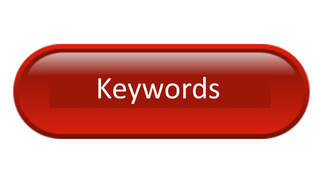 The problem is, identifying which words the readers are using. It may not be the ones we think they are. You may think I’m talking about “Search Engine Optimisation” (SEO) and you are dead right – I am. Only we don’t need to use a fancy term like that, and we certainly don’t need to pay someone to do that for us. Manual targeting on Amazon Ads is the most cost efficient way of using that advertising platform. But it relies heavily on the advertiser (you) knowing how to get the best out it. 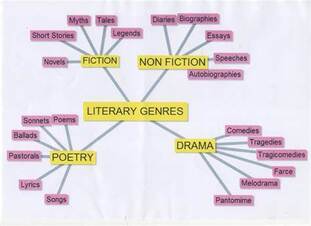 So many genres - but which one is the best fit for your book? So many genres - but which one is the best fit for your book? The first type of manual targeting uses your book’s genre. Anyone who buys books in the same genre will have your book in their “recommendations”. Amazon Ads suggests the genres and you can delete any that you don’t think really apply. For example, Amazon Ads may suggest both modern and historical romance for your book, but your book can’t be both, so you can delete the one that doesn’t apply. But you can also insert your own genres. For example, if yours is a fantasy book with a strong romantic sub-plot, you don’t have to limit your advertising to the fantasy genre. You can add romance genres too. Do you know which genre listing on Amazon is going to be the best for your book? Some are better than others for getting your book seen and, according to Publishing Rocket’s publicity video, there are “hidden” genres too. For some genres you can even get to the number 1 bestseller spot by selling only a handful of copies. That is useful stuff to know – but how do you find out which genre(s) you should be advertising to? Read on to find out. By the way, did you know that you aren’t limited to just 2 genres on KDP? That only applies when you first upload your book. Once it is published, you can select up to 7. You need an account on Author Central and then you need to go to Help>Contact>Amazon Store & Detail Page>Contact us>Amazon Book Page>Update Amazon Categories. 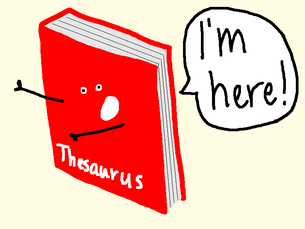 The second type of manual targeting uses keywords. Amazon Ads tutorials suggest using between 100 and 150 keywords (or keywords strings) in an ad such as this. If you struggled to come up with 7 keywords for your book, how are you going to come up with 100-150? Well, using author names and the titles of similar books is one way. But whose books and which titles? Which is where Publisher Rocket comes in. OK, it took a long time to get here, but if you don’t understand the basics of Amazon (or other platform) advertising, you aren’t going to understand the value of this product. What Publisher Rocket does is gather together the search terms that are used on Amazon and presents them to you for your consideration. But it also does much more than that. It also provides data which tells you which of those terms is best at turning advert “clicks” into sales. "Publisher Rocket helps to sort the wheat from the chaff"  Not all search words are equal, you see. Sometimes the reader enters fairly random words into the search bar and therefore the results they get back don’t provide them with what they are looking for, so they have to have another go. But if the reader clicks on a book out of curiosity, those random search words still appear as results, so it is essential to know that they aren’t that useful, so as to exclude them. Publisher Rocket helps to sort the wheat from the chaff by providing the user with a wide range of data that they can download into a spreadsheet to filter and sort to their heart’s content to answer the vital keyword questions they may have. The one thing they don’t want to do is pay for clicks on their ad which won’t be converted into sales. Just because they and Isaac Asimov both write sci-fi, it doesn’t mean that their readers and Isaac Asimov’s readers like the same sort of books. They may want to exclude that name as a keyword for that reason, so that they don’t pay for clicks from curious Isaac Asimov readers who aren’t going to buy their books. 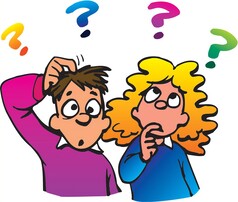 OK, if that sounds complicated, that may be something for just the real data nerds to get into. For the rest of us, Publisher Rocket provides us with some simpler tools to use to find words that are good to use for our books, by genre, and what aren’t so good. Using the app is easy enough, but Publisher Rocket’s owners make it even easier by providing “how to” webinars to guide you through the various functions and offer advice on how to get the best results. The owner of Publisher Rocket is a company called Kindlepreneur, a company created by self-made Kindle millionaire Dave Chesson. This isn’t their only product, but it is the one we have found to be most useful in helping us to increase the efficiency of our advertising campaigns. If you saw our blog last week (see below the end of this blog), you will know that this is something we have been focusing on in recent months and it has paid off for us. Publisher Rocket costs $97 (around £85) for a lifetime subscription, which is why it may not be suitable for people who only ever plan to publish one book and who don’t intend getting into marketing. In other words, it isn’t any use to an author who doesn’t want their book to be read. Those that do want their books to be read may find it more useful. "As a publisher this was a no brainer for us" But even if you only have one book, the purchase price could be paid back quite quickly (it is the equivalent to approximately 50 extra sales) if you use the results to improve your advertising efficiency. As a publisher this was a no brainer for us. We bought Publisher Rocket in November last year and it had paid for itself by Christmas. We don’t use it every day, but when we do use it we know we are going to get the most bangs for our buck out of our advertising. So, if you need some help with your Amazon Ads, this product may be just the thing and we are happy to recommend it. If you want to know more about the product, click here. If you have enjoyed this blog, or found it informative, then make sure you don’t miss future editions. Just click on the button below to sign up for our newsletter. We’ll even send you a free ebook for doing so. Disclaimer: We are not connected with Bryan Cohen in any way and have no financial interest in his book. This review has not been paid for by Bryan Cohen or anyone else. 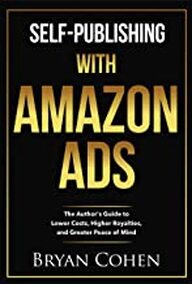 This book probably represents the best £3.99 I have ever spent since I started publishing. That is because it’s a book that actually paid for itself several times over. I would go so far as to say I wish I had read it 5 years ago, as it would have saved me a lot of time and money. That isn’t actually possible, as the book was only published this year, but you know what I mean. This article will be half book review and half blog. The blog part tells you what happened when we tried to apply the ideas and methods that Bryan Cohen recommends in “Self-Publishing With Amazon Ads”. Some of you may just want to know how that worked out, so that bit is at the end of the article. "You’ll have to find out the hard way that there is no such thing as “instant gratification” when it comes to marketing a book." If you are still reading this now, and haven’t scrolled down to find out what happened, you have one of the key qualities that Bryan Cohen talks about in the book: patience. Cohen doesn’t promise instant results. One of the first things you will learn from this book is that generating consistent results from Amazon advertising is a marathon not a sprint, and if you aren’t prepared to be patient then this may not be the book for you. You’ll have to find out the hard way that there is no such thing as “instant gratification” when it comes to marketing a book. If you have never used Amazon Ads, or you have only just dipped your toe in the water, then you will be at a bit of a disadvantage, as Cohen assumes some prior knowledge. But don’t worry. That prior knowledge is available. Amazon Ads provides webinars for its new users here. "helping authors to reduce the amount of money they spend while also getting better results" A word of caution about the webinar. It is aimed at encouraging you to spend money with Amazon Ads. After all, Amazon Ads is a business and it makes its profits from its users, so the more money users spend with them, the more profit Amazon makes. Bryan Cohen’s book, however, is aimed at helping authors to reduce the amount of money they spend while also getting better results. This means that some of Cohen’s advice on bidding strategies contradicts that of the webinar. And if you are wondering what a bidding strategy is, it means that you need to do the webinar before you dive into this book. Just a quick word about the author. He is a self-published author himself and he also provides self-publishing training and other services for authors through his website Best Page Forward. But not all the training he provides has to be paid for. Each quarter he hosts the 5 Day Amazon Ads Profit Challenge, which is free to join and which has provided coaching for over 25,000 authors. "She challenges Cohen at every turn" Each chapter in the book takes the reader through a different phase of a process that starts with poorly performing ads and progresses to turning those ads into high performing ones. Each chapter therefore introduces a new idea or method, so if you try to skip ahead to the “good bit”, where you are making millions, you are likely to miss out on a vital step which means your objective won’t be realised. See, once again you have to be patient. Just something to note. Early in the book Cohen talks about creating 5-10 ads a week. This is for the benefit of American readers, because Amazon.com allows readers to create customised ads and advertisers are encouraged to create several different customised ads a week to appeal to different segments of the market. That facility doesn’t exist for users of other Amazon markets (yet). For us, the Amazon page for our book is our ad. That is actually a timesaver for us, because one ad can run forever. However, the rest of what Bryan talks about is completely valid and if we ever get access to the customisation function, we'll be ready for it because we've read this book. Each chapter is broken down into two parts. One part is a “fly-on-the-wall” view of an on-line coaching session with one of Bryan’s clients, a woman called Erin. The other part is Bryan speaking directly to the reader to explain what he is teaching Erin. I don’t know if Erin is a real person or a composite character created for the reader’s benefit, but she is the person who asks the questions that the reader might want to ask. She comes to the course as a sceptic and has to be shown that the process works by actually implementing the methods herself so that she can see the profits from her ads increasing over time. And Erin isn’t a passive student. She challenges Cohen at every turn, especially on the issue of how long it will take to see returns and how she is going to fit in the time to do what he recommends. Because, as with all things, time is one of the most valuable resources we have and, as writers, we’d rather be spending our time writing than marketing. But Cohen is ahead of Erin here as well and there are specific sections on time management. "only a handful of people will ever achieve 6 digit profits" One of the things I liked about the book is that it is grounded in realism. When Cohen talks about increasing royalties and profits (not the same thing, as you will find out if you buy the book), he doesn’t promise telephone number sized amounts of money. He talks about investing $50 dollar a month to make $100 profit, which gives a feeling of being achievable. He then talks about increasing that profit to $200, $500 and maybe $1,000. He does refer to people who have made considerably more, but he tempers that with the realism that maybe only a handful of people will ever achieve 6 digit profits – but you get a warm feeling from knowing that, by doing a bit of work, you could be in that handful. Cohen is just as realistic about how much time we have available to do the work. He knows we have day jobs, families to look after and writing careers to pursue, so he tries to optimise the amount of work we may have to do in order to make best use of the time we have available. Time management is a key message. Readers of this blog will notice that I have only given the book 4 stars and therefore I had some reservations about it. That is true, but the reservations aren’t about the lessons that Cohen teaches, they are more about the way they are presented. For a start, Cohen refers to some calculations you may want to do in order to produce some performance data. Some worked examples would be very helpful to understand what he is talking about, but they are lacking. "bombarded with a whole lot of data" There are no handy graphics, such as screen shots of Amazon Ads pages, where things can be pointed out. While I am quite good with the internet, there are features I miss on web pages and some key features aren’t always the most prominently displayed. A graphic pointing out “This is the button you need to click” and “This is where you have to alter x” would be really helpful. The other thing I had a problem with is the additional applications that you might want to use, especially those relating to generating lists of keywords (If you don’t know what a keyword is, then see above regarding the Amazon Ads webinar). One of the applications has to be purchased (about £100) and comes with its own training videos, so that’s OK (it isn’t essential and you don’t have to buy it, but it is a useful tool and we will review it next week). But the other two are plug ins for Google Chrome, which are free and come with neither a user guide nor helpful training videos. I tried using them and was bombarded with a whole lot of data which I struggled to interpret. Some guidance on how to interpret the data produced by those plug-ins (with accompanying graphics), so that I could use it in ads, would have been really useful. But don’t let those three things put you off buying this book. Firstly, with a bit of patience (again) I found the buttons I needed to click and the things I needed to adjust. And, with some trial and error, I did work out how to interpret the data produced by the plug-ins. But it took time that I hadn’t factored in and which I had to divert from other activities. "while we were doing a lot of things right, we were also doing quite a few things wrong" So, how did we get on? The first thing you need to know is that here at Selfishgenie we aren’t complete novices. We have been running Amazon Ads for many years, with mixed results. From articles I had read on various websites I found out that advertising with Amazon wasn’t a quick fix. We would need to spend more money than we had in the past and let our ads run for longer if we wanted them to be successful. So, around April 2022 (before we bought this book) we decided to commit some of our sales revenue to improving our advertising, as an investment to make more revenue in the future. And it worked. We launched an ad campaign for our Carter’s Commandos series and saw our monthly royalties increase from the low three digit level per month to a four digit level by October, which we were able to maintain. But the amount of money we were spending to get that revenue seemed to be higher than it needed to be. In terms of profit on the campaign (the net amount we made from each sale compared to the gross amount we spent), we felt sure we should be doing better. That was when I stumbled across Bryan Cohen’s book. Actually, I did a search looking for blogs about using Amazon Ads and it appeared in the search results. It didn’t take long to discover that while we were doing a lot of things right, we were also doing quite a few things wrong. In particular, our bidding strategy was wrong. We thought we could buy sales by spending more money. In fact, all we were doing was giving Amazon more money than we needed to, which was reducing the profit from the sales we did make. "give away Bryan’s secrets for free" The way Amazon’s advertising algorithms work mean that bid price is only one factor in getting our ads seen. I won’t steal Bryan Cohen’s thunder (or reduce his books sales) by telling you what the other variables in the algorithms are. (I know, but it wouldn’t be fair to give away Bryan’s secrets for free). I won’t bore you with all the details of what we did. Suffice to say that we learnt the lessons that Bryan Cohen was trying to teach us. 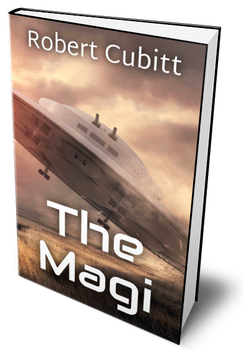 But what we did do was to run a trial to see how his methods compared to our own. We continued to advertise our Carter’s Commandos series the way we always had. But our Magi sci-fi series had been bumping along the bottom, making very few sales per month. So, we started a brand new ad campaign for the first book in that series and applied the newly learnt lessons to that series to see what happened. NB. When I refer to "sales" below I also mean KindleUnlimited (KENP) pages read. 1st 30 Days The good news is that we got clicks on our ads from Day 1 and we made more sales than in the previous 3 months, but they weren’t Earth shatteringly good. The campaign wasn’t profitable, meaning we spent more than we received in Royalties. We tweaked the book’s blurb (see last week’s review of “Fiction Blurbs: The Best Page Forward Way”), but there wasn’t much else we could do to stimulate more sales during that period. 2nd 30 Days Here we started to reap the benefit of “delayed results”. It is said that buyers have to see an ad an average of 7 times before they respond. This seemed to be the case as the number of clicks on our ads increased the longer the ad ran and we started to see more sales. But we also started to see sales for books we hadn’t advertised. The Magi is a 9 book series, and we were only advertising Book 1. But we started to get sales for books 2 – 9, which we hadn’t advertised. Our original ad was instrumental in developing a “fan base” for the series. These additional sales meant we were now in profit. Final 30 days I’d be lying if I told you that sales really started to take off. But they did continue even if they were unspectacular. There seems to be some sales resistance to The Magi series which we aren’t getting for other series, and we need to dig into that to see if we can work out what is causing it. The final 30 days of the trial was also during January, when money is traditionally tight for people - even avid readers of sci-fi. However, we have sold more copies of titles in The Magi series in the last 90 days than we did in the previous 9 months and the campaign is showing a profit, so overall we count it as a success. "highly recommended" So, what are the main take-aways we have from the book? 1. This isn’t a quick fix. We required patience and strong nerves to spend money without seeing a profit for several weeks. 2. If we are doing a “category ad” (advertising by genre), we needed to keep the band narrow so as not to waste money on genres that aren’t relevant and where our ad may generate a click (which we pay for) but won’t get converted into a sale. 3. We needed to use more keywords in our ads and we had to make them relevant to the genre of books we were selling. The Magi series is “space opera”, so there is no point in using keywords that relate to dystopian sci-fi. Again, they may generate clicks, but they won’t get converted into sales. 4. We needed to use the data from the ad campaigns to help reduce our costs. For example, we were getting hundreds of clicks for one keyword, generating cost, but the clicks didn’t convert to sales. Conclusion: readers who use that keyword aren’t interested in our book. So, we deleted the keyword from the list. 5. It works! 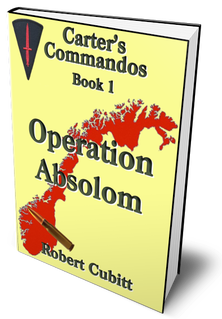 Having learnt from this experience, we have now tweaked our ad for Carter's Commandos, to take into account what we now know we can do better, which hasn't increased our sales but has reduced our costs, so we are actually keeping more of our money, which is a win, which makes us happy. If you are an Indie author or a small publisher (like us) then “Self-Publishing With Amazon Ads” by Bryan Cohen is highly recommended. To find out more about the book, just click or tap on the cover image at the top of the blog. If you have enjoyed this blog, or found it informative, then make sure you don’t miss future editions. Just click on the button below to sign up for our newsletter. We’ll even send you a free ebook for doing so. |
AuthorThis blog is compiled and curated by the Selfishgenie publishing team. Archives
March 2025
|

 RSS Feed
RSS Feed